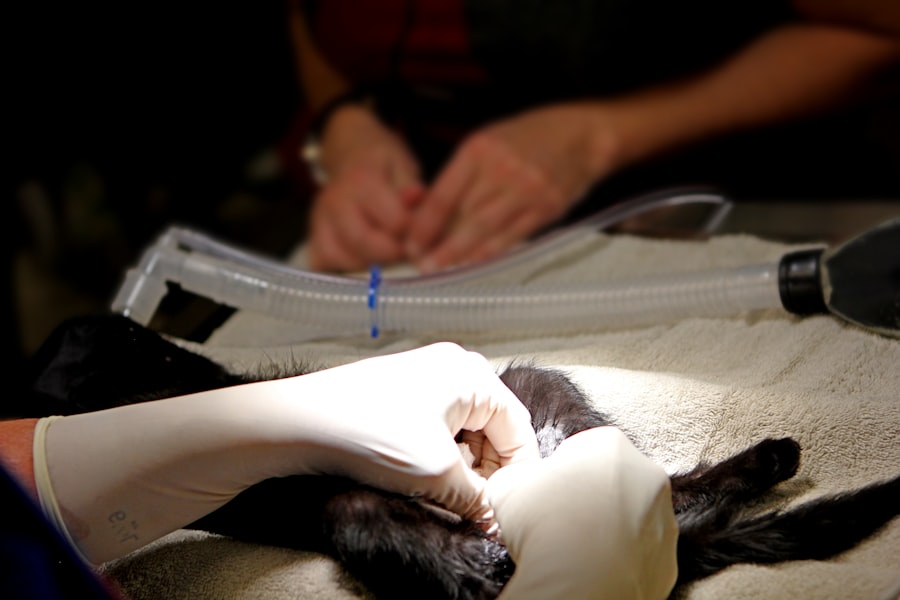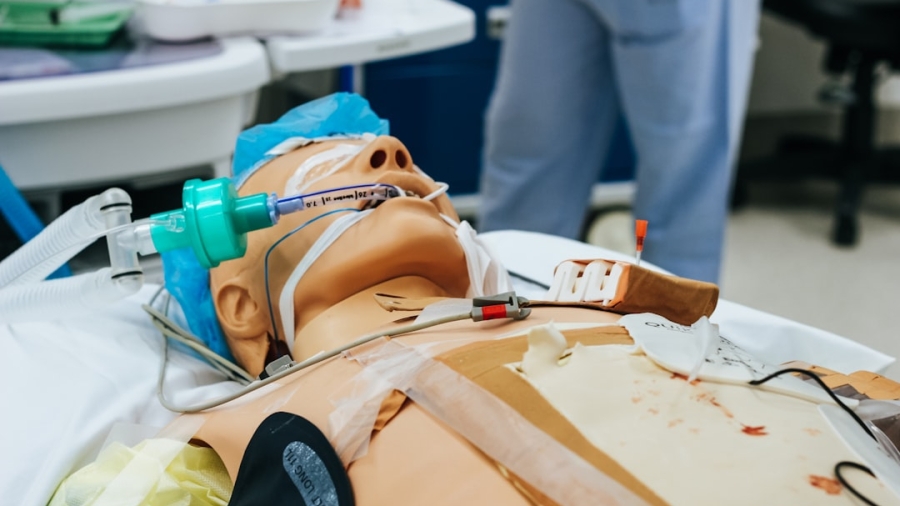Virtual Reality (VR) has emerged as a transformative technology in various fields, and its application in medical training and education is particularly noteworthy. By creating immersive, interactive environments, VR allows medical professionals and students to engage in realistic simulations that enhance their learning experiences. This technology enables users to practice procedures, make critical decisions, and experience patient interactions in a controlled setting, which is invaluable for developing the skills necessary for real-world medical practice.
The integration of VR into medical education is not merely a trend; it represents a paradigm shift in how healthcare professionals are trained, offering opportunities for experiential learning that traditional methods cannot match. The evolution of VR technology has coincided with the increasing complexity of medical procedures and the growing demand for skilled healthcare providers. As medical knowledge expands and the healthcare landscape evolves, there is a pressing need for innovative training solutions that can keep pace with these changes.
VR provides a unique platform for educators to create tailored learning experiences that cater to diverse learning styles and paces. By immersing students in lifelike scenarios, VR fosters a deeper understanding of anatomy, physiology, and clinical skills, ultimately leading to improved patient care outcomes. As we delve deeper into the benefits, applications, challenges, and future trends of VR in medical training, it becomes clear that this technology is poised to redefine the educational landscape for healthcare professionals.
Key Takeaways
- VR in medical training and education offers a highly immersive and interactive learning experience for students and professionals.
- The benefits of VR in medical training and education include improved retention of knowledge, enhanced surgical skills, and the ability to practice in a safe and controlled environment.
- VR applications in medical training and education range from anatomy and physiology simulations to surgical procedure rehearsals and patient interaction scenarios.
- Challenges and limitations of VR in medical training and education include high costs, technical issues, and the need for evidence-based validation of its effectiveness.
- Future developments and trends in VR for medical training and education may include the integration of artificial intelligence, haptic feedback, and personalized learning experiences.
Benefits of VR in Medical Training and Education
Enhancing Medical Training with Virtual Reality
One of the most significant advantages of Virtual Reality (VR) in medical training is its ability to provide a safe environment for learners to practice high-stakes procedures without the risk of harming real patients. In traditional training settings, students often rely on cadavers or simulated patients, which can limit their exposure to various scenarios. VR circumvents these limitations by allowing learners to engage in repeated practice of complex procedures, such as surgeries or emergency responses, until they achieve proficiency.
Building Confidence and Muscle Memory
This repetitive practice not only builds confidence but also enhances muscle memory, which is crucial for performing intricate tasks under pressure. Moreover, VR facilitates immediate feedback and assessment, which are essential components of effective learning. In a virtual environment, instructors can monitor students’ performance in real-time and provide constructive feedback that helps them refine their skills.
Accelerating the Learning Curve
This instant evaluation process accelerates the learning curve and allows students to identify areas for improvement quickly. Additionally, VR can simulate rare or critical cases that students may not encounter during their clinical rotations, ensuring that they are well-prepared for any situation they might face in their careers. The combination of safe practice, immediate feedback, and exposure to diverse scenarios makes VR an invaluable tool in medical education.
Applications of VR in Medical Training and Education

The applications of VR in medical training are vast and varied, encompassing a wide range of specialties and skills. One prominent use is in surgical training, where VR simulations allow aspiring surgeons to practice intricate procedures such as laparoscopic surgery or orthopedic interventions. These simulations can replicate the tactile feedback of real instruments and the visual complexity of human anatomy, providing a realistic experience that enhances learning outcomes.
Furthermore, surgical trainees can rehearse procedures multiple times before stepping into an operating room, significantly reducing the risk of errors during actual surgeries. Beyond surgical training, VR is also being utilized for patient interaction simulations. Medical students can engage with virtual patients who present with various symptoms and conditions, allowing them to practice diagnostic skills and bedside manner in a risk-free environment.
This application is particularly beneficial for developing communication skills and empathy, which are critical components of effective patient care. By interacting with virtual patients who respond dynamically to questions and treatment approaches, learners can refine their clinical reasoning and decision-making abilities. The versatility of VR applications in both technical skills and interpersonal communication underscores its potential to revolutionize medical education.
Challenges and Limitations of VR in Medical Training and Education
Despite its numerous advantages, the integration of VR into medical training is not without challenges. One significant barrier is the high cost associated with developing and implementing VR systems. Creating realistic simulations requires substantial investment in technology, software development, and ongoing maintenance.
Many educational institutions may struggle to allocate sufficient resources for such initiatives, particularly when budgets are tight. Additionally, the rapid pace of technological advancement means that institutions must continually update their systems to remain relevant, further complicating financial planning. Another challenge lies in the acceptance and adoption of VR technology among educators and students alike.
While many recognize the potential benefits of VR, there may be resistance to change from traditional teaching methods that have been used for decades. Some educators may feel unprepared or lack the necessary training to effectively incorporate VR into their curricula. Furthermore, students accustomed to conventional learning environments may initially find it difficult to adapt to immersive simulations.
Overcoming these hurdles requires comprehensive training programs for educators and a gradual introduction of VR into existing curricula to ensure a smooth transition.
Future Developments and Trends in VR for Medical Training and Education
Looking ahead, the future of VR in medical training appears promising as technology continues to evolve. One notable trend is the increasing use of artificial intelligence (AI) within VR simulations. By integrating AI algorithms, virtual patients can exhibit more realistic behaviors and responses based on learners’ actions.
This advancement will enhance the realism of simulations and provide even more valuable learning experiences for students. Additionally, AI can analyze learners’ performance data to offer personalized feedback and recommendations tailored to individual needs. Another exciting development is the potential for collaborative VR experiences that allow multiple users to interact within the same virtual environment.
This capability could facilitate team-based training scenarios where medical professionals from different disciplines collaborate on complex cases. Such collaborative training would mirror real-world healthcare settings where interdisciplinary teamwork is essential for effective patient care. As these technologies continue to advance, we can expect VR to play an increasingly central role in shaping the future of medical education.
Case Studies of Successful Implementation of VR in Medical Training and Education

Effective Integration of VR in Medical Training
Several institutions have successfully integrated Virtual Reality (VR) into their medical training programs, showcasing its effectiveness as an educational tool. For instance, Stanford University has developed a comprehensive VR program that allows medical students to practice surgical techniques through immersive simulations. The program has received positive feedback from both students and faculty members, who report increased confidence levels among trainees after engaging with the technology.
Enhanced Surgical Training with VR
The ability to practice complex procedures repeatedly has proven invaluable in preparing students for real-life surgical challenges. This hands-on approach enables students to refine their skills and build confidence in a controlled environment, ultimately leading to better preparedness for actual surgeries.
Revolutionizing Anatomy Education with VR
Another notable example comes from the University of Illinois College of Medicine at Peoria, which implemented a VR-based curriculum for teaching anatomy. By using VR headsets and interactive 3D models, students can explore human anatomy from various angles and perspectives. This immersive approach has significantly improved students’ understanding of anatomical structures compared to traditional textbook learning methods.
Widespread Adoption of VR in Medical Education
The success of these case studies highlights the potential for widespread adoption of VR technology across medical education institutions. As VR technology continues to evolve, it is likely to play an increasingly important role in shaping the future of medical education and training.
Ethical Considerations in the Use of VR in Medical Training and Education
As with any emerging technology, ethical considerations must be addressed when integrating VR into medical training and education. One primary concern revolves around the potential desensitization of learners who repeatedly engage with virtual patients or simulated scenarios involving trauma or distressing situations. Educators must ensure that while students gain valuable experience through these simulations, they also develop empathy and compassion towards real patients.
Striking a balance between technical proficiency and emotional intelligence is crucial for producing well-rounded healthcare professionals. Additionally, issues related to data privacy and security must be considered when implementing VR systems that collect user data for performance analysis or personalized feedback. Institutions must establish robust protocols to protect sensitive information while ensuring compliance with regulations such as HIPAA (Health Insurance Portability and Accountability Act).
Transparency regarding data usage and consent is essential to maintain trust between educators and learners as they navigate this new technological landscape.
Conclusion and Recommendations for the Integration of VR in Medical Training and Education
In conclusion, Virtual Reality holds immense potential for revolutionizing medical training and education by providing immersive experiences that enhance learning outcomes across various specialties. The benefits of safe practice environments, immediate feedback mechanisms, and exposure to diverse clinical scenarios make it an invaluable tool for developing competent healthcare professionals. However, challenges such as high costs and resistance to change must be addressed to facilitate successful integration.
To maximize the impact of VR in medical education, institutions should invest in comprehensive training programs for educators while gradually incorporating VR into existing curricula. Collaboration between technology developers and educational institutions will also be essential in creating high-quality simulations that meet the needs of learners effectively. As we move forward into an era where technology plays an increasingly significant role in healthcare education, embracing innovations like Virtual Reality will be crucial for preparing future generations of medical professionals equipped with the skills necessary to provide exceptional patient care.
For those interested in the intersection of technology and education, particularly in the medical field, exploring the potential of virtual reality (VR) is crucial. While VR’s role in medical training and education is expanding, understanding the broader implications of technology in educational contexts can also be beneficial. An article that might be of interest discusses how to choose your child’s first tablet, highlighting the importance of selecting appropriate technological tools that can enhance learning experiences from a young age. This can provide insights into how technology can be tailored to fit educational needs across different stages of learning, including sophisticated applications like VR in medical training.
FAQs
What is VR?
VR stands for virtual reality, which is a computer-generated simulation of an environment that can be interacted with in a seemingly real or physical way by a person using special electronic equipment, such as a helmet with a screen inside or gloves fitted with sensors.
How is VR used in medical training and education?
VR is used in medical training and education to provide a realistic and immersive learning experience for medical students and professionals. It allows them to practice surgical procedures, interact with virtual patients, and explore anatomical structures in a safe and controlled environment.
What are the benefits of using VR in medical training and education?
The benefits of using VR in medical training and education include improved retention of information, enhanced spatial understanding of complex anatomical structures, the ability to practice rare or high-risk procedures without putting patients at risk, and the opportunity for students to learn at their own pace.
Are there any limitations to using VR in medical training and education?
Some limitations of using VR in medical training and education include the high cost of equipment and software, the need for technical support and maintenance, and the potential for simulation sickness in some users. Additionally, VR may not fully replicate the tactile feedback experienced in real-life medical procedures.

